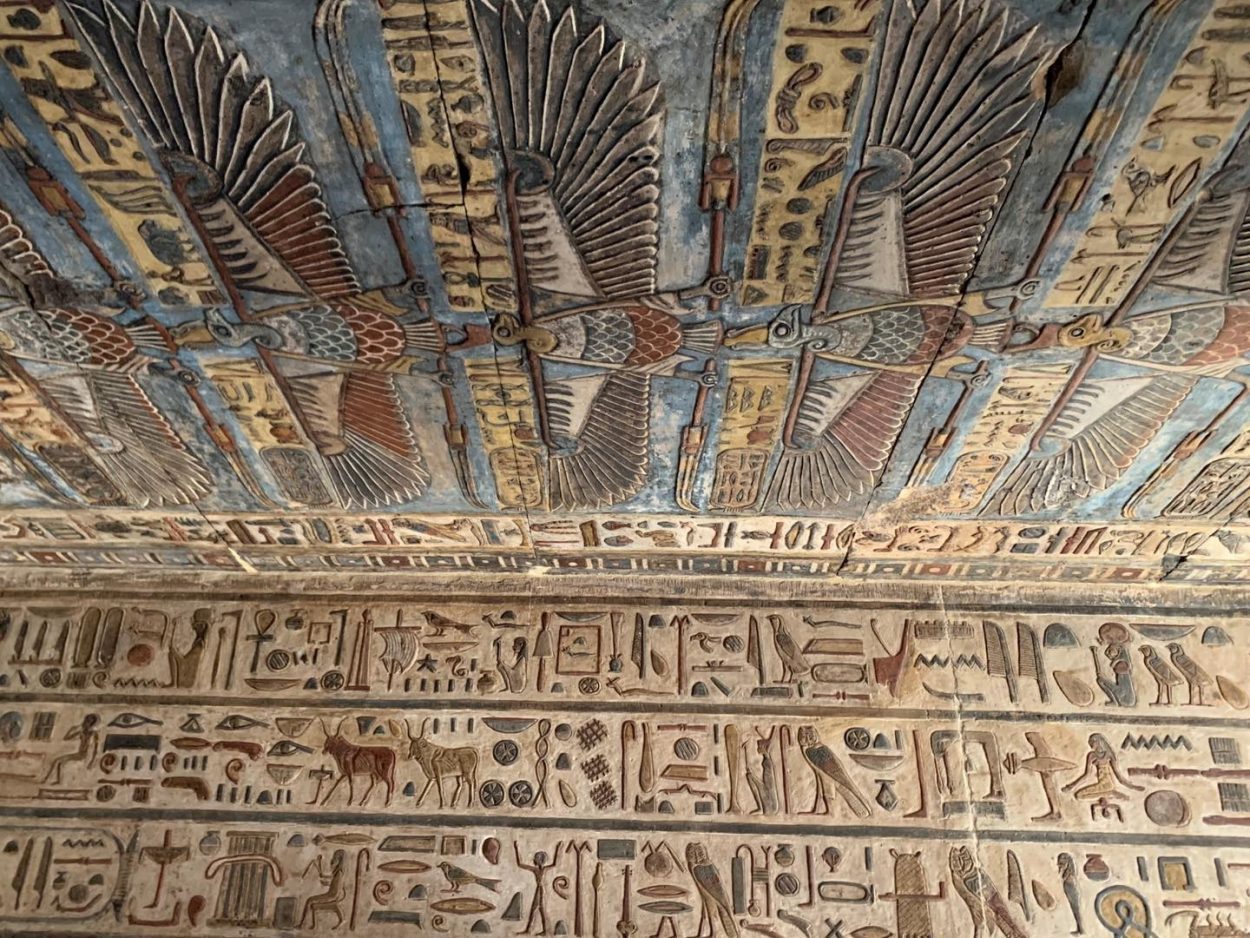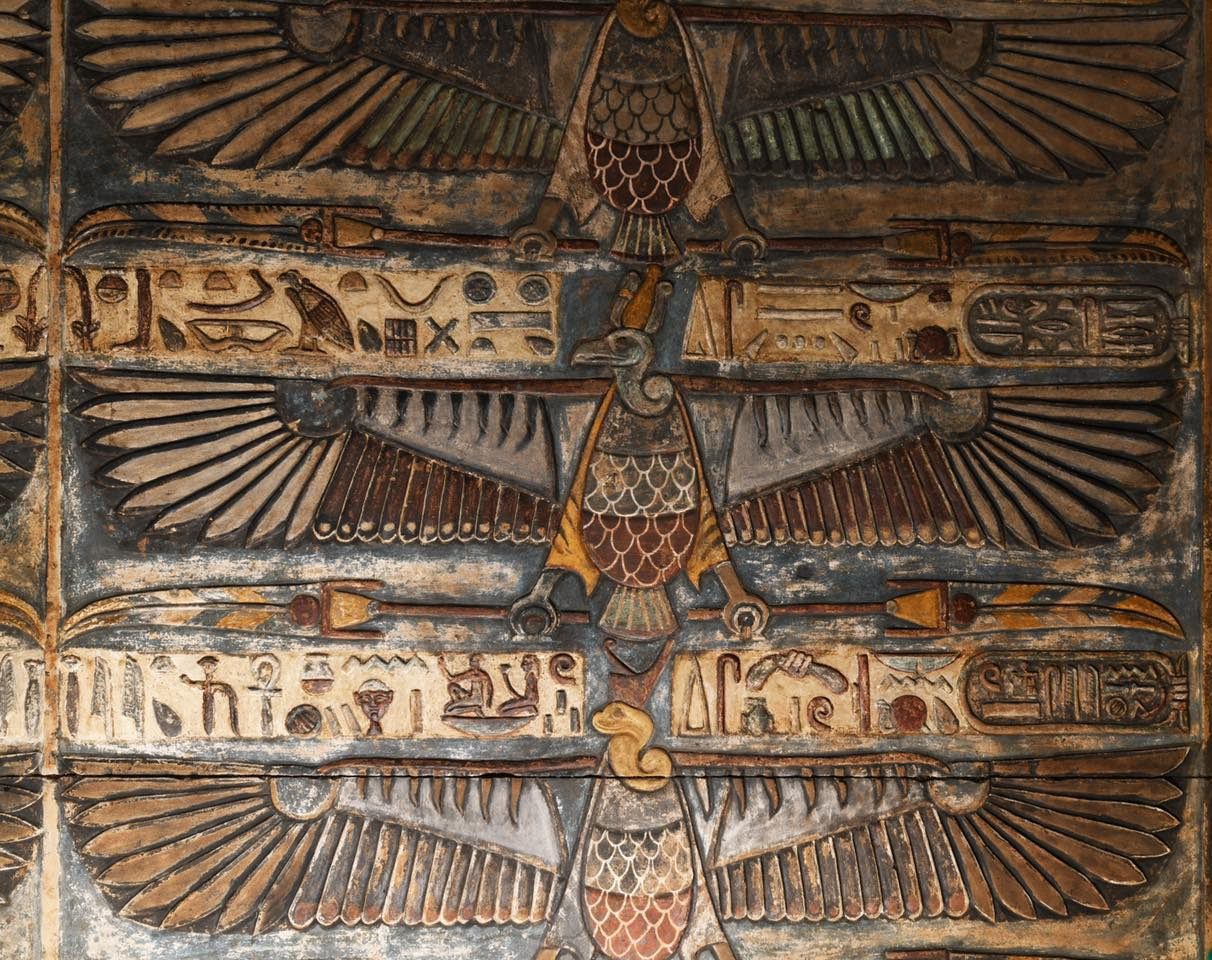A joint German/Egyptian archaeological mission at the Esna Temple in Egypt has revealed some of the original colour and patterns within part of the temple complex during restoration works.
The Esna Temple is dedicated to the Ancient Egyptian god, Khnum, and his consorts Menhit and Nebtu, their son, Heka, and the goddess Neith.
Khnum was one of the earliest-known Egyptian deities, originally the god of the source of the Nile and the creator of the bodies of human children (which he made at a potter’s wheel). He was later described as having moulded the other deities, and he had the titles “Divine Potter” and “Lord of created things from himself”.
The construction of the Esna Temple dates from Ptolemaic times, however, most of the parts that survive today are from the Roman period.

The restoration project found the original colours and patterns under the middle ceiling above the entrance to the temple. A careful process of cleaning revealed a painting that depicts 46 vultures in a row, 20 of which have a vultures head (representing Upper Egypt), whilst the remainder the head of a cobra (representing Lower Egypt).
Dr. Hisham El-Lithy, head of the Central Administration for Egyptian Archaeology Registration and Head of the Egyptian Archaeological Mission said: “The colourful inscriptions have suffered over the past centuries from the accumulation of thick layers and impurities.”
Whilst cleaning the western wall of the temple, the researchers also found Greek inscriptions drawn in red ink that dates from the Roman period during the reign of Emperor Domitian (AD 81-96). The inscription records the day and eleventh month of the ancient Egyptian and Coptic calendars – “EPIPHI 5” which corresponds to around the time the temple was likely completed.
Ministry of Tourism and Antiquities
Header Image Credit : Ministry of Tourism and Antiquities





